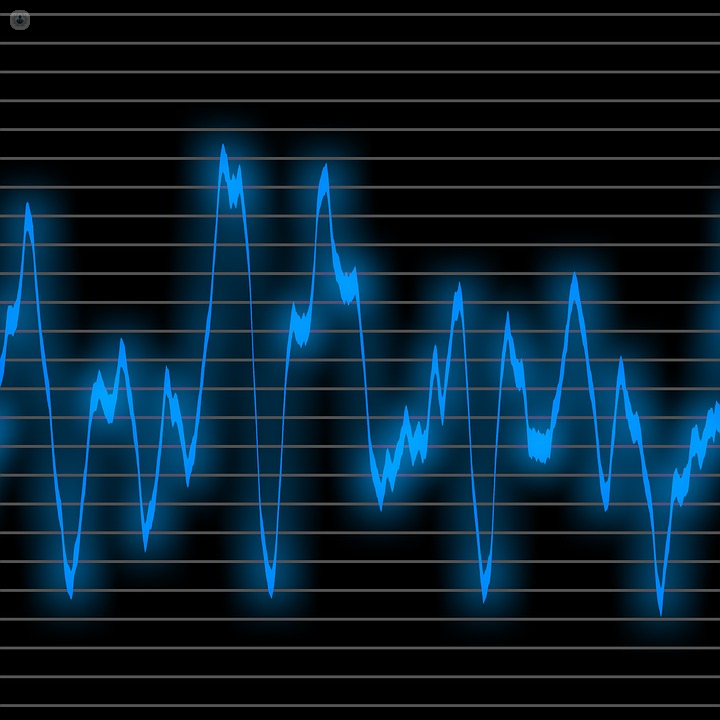Doppler Ultrasound
Dr Antonis Pantazis - Cardiology
Created on: 11-13-2012
Updated on: 11-07-2023
Edited by: Aoife Maguire
What is a Doppler Ultrasound?
A Doppler ultrasound is a non-invasive test to measure blood flow through blood vessels. The device combines a regular ultrasound, which bounces sound waves off objects, with the Doppler effect to determine the speed at which the objects (in this case red blood cells) are moving.
The test is known as a Doppler ultrasound after Christian Doppler, who described how the pitch coming from an object differs depending on its speed. This is just like the effect of a car engine – as the vehicle approaches, the pitch is higher and as it moves away it drops. The effect is used in everything from radar to astronomy.

What does it involve?
In a Doppler Ultrasound, a device is passed over skin in the area to be tested. The device sends out high-frequency sound waves to bounce off red-blood cells, measuring the blood flow in a particular vessel.
A gel is applied to the skin, depending on where the blood vessels to be tested are located. A device (the transducer) is then passed along the skin. Blood pressure cuffs might be deployed to compare blood pressure.
What is it for?
A Doppler ultrasound is used to detect blood flow which can in turn help to diagnose a multitude of conditions including blood clots, blocked or narrowing arteries and aneurysms (bulging arteries) to name a few. It can also be used to monitor blood flow after surgery and even to monitor the health of an unborn child.
How can you prepare for it?
The technique is non-invasive and very little preparation is needed. Loose clothing is suggested and items such as tights or stockings may need to be removed as a device needs to be passed over the skin. The cessation of smoking may also be required as nicotine can narrow blood vessels.
What does it feel like during the procedure?
A Doppler ultrasound doesn’t cause pain or discomfort, although patients may hear the sound of blood passing through their arteries, experienced as a whooshing sound.
What would a “bad” result mean?
The results are interpreted to determine whether there is narrowing or blockage in the arteries. Normal results indicate that blood pressure is normal and there is no narrowing or blockages.
A 'bad' result would be indicated by the detection of abnormal blood flow, which could be indicative of a number of conditions. These results would be interpreted by a doctor.






